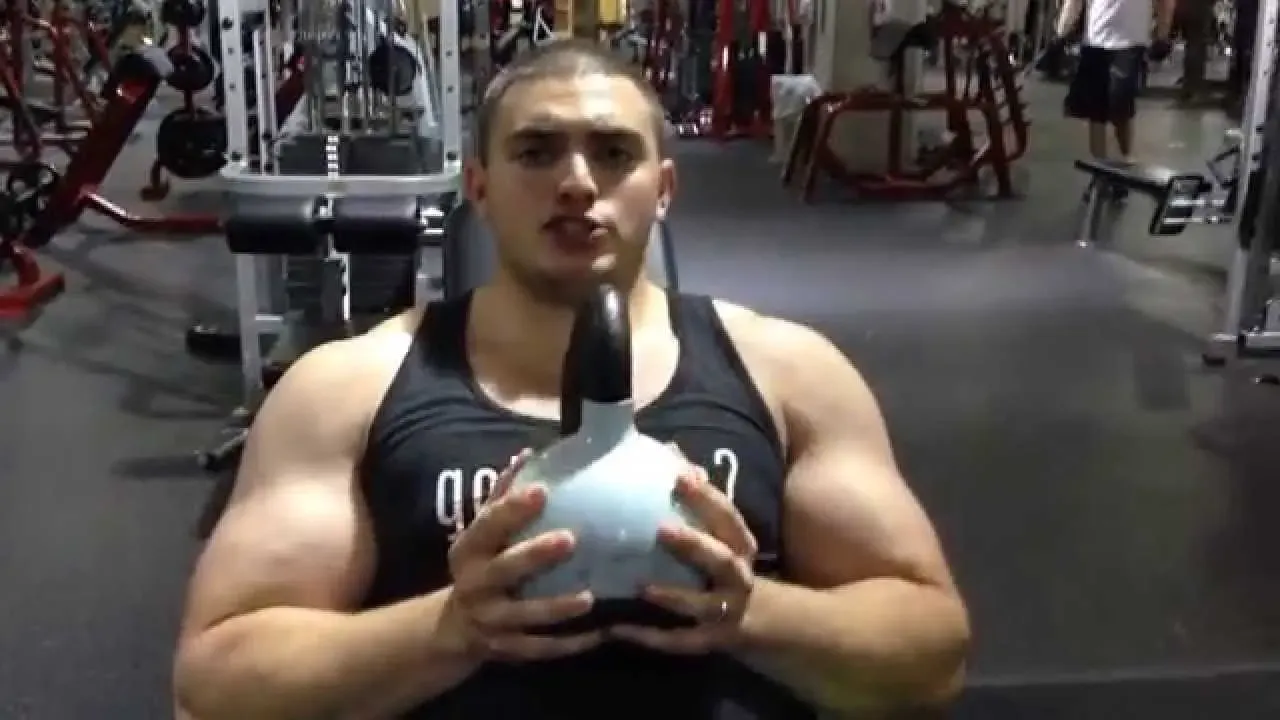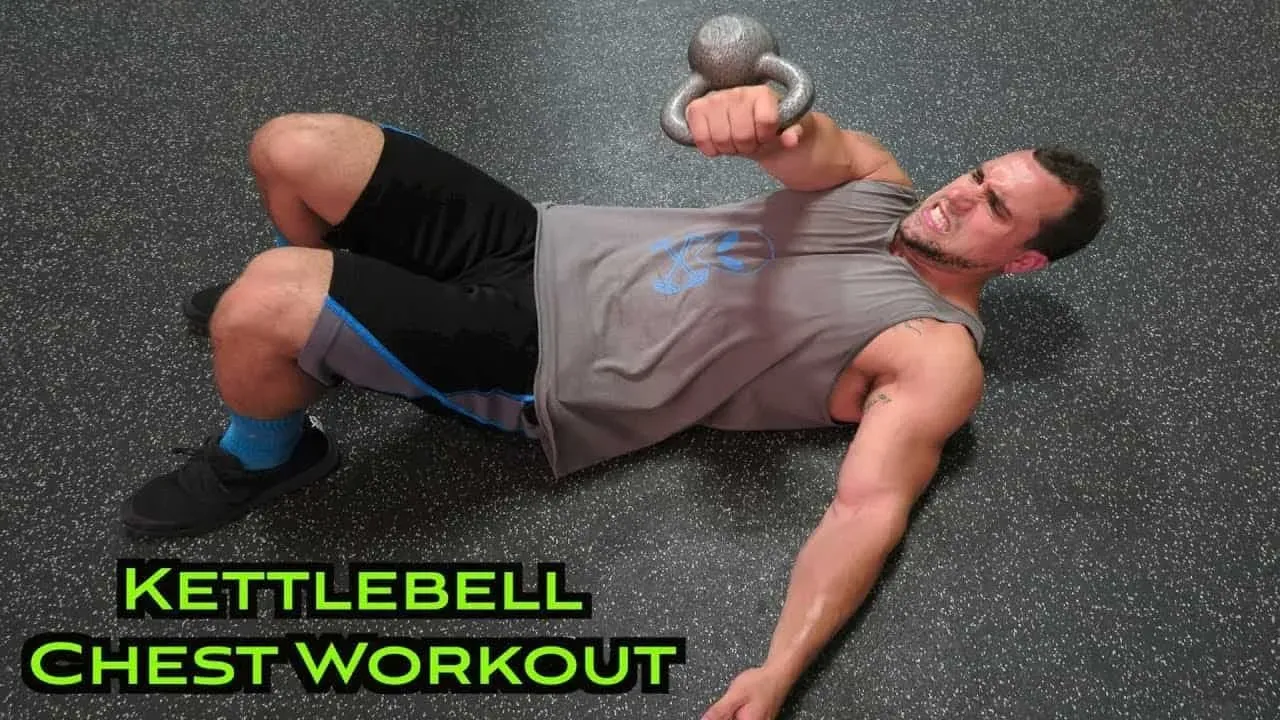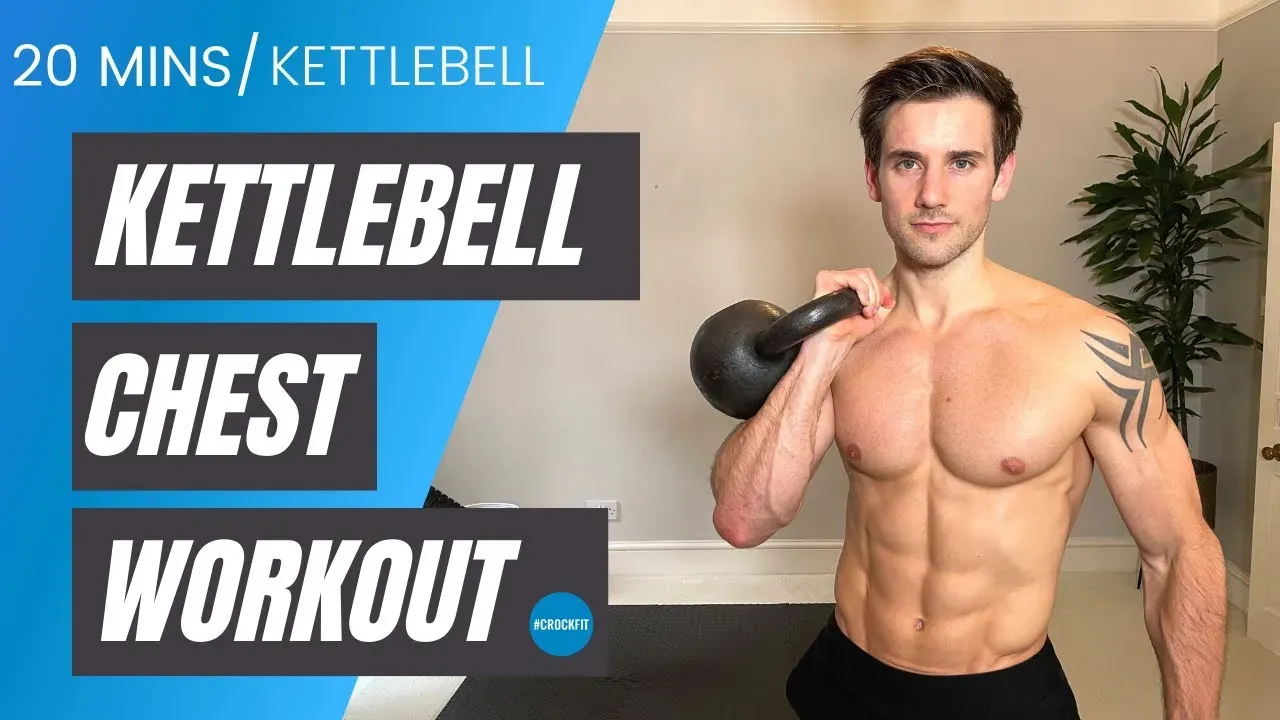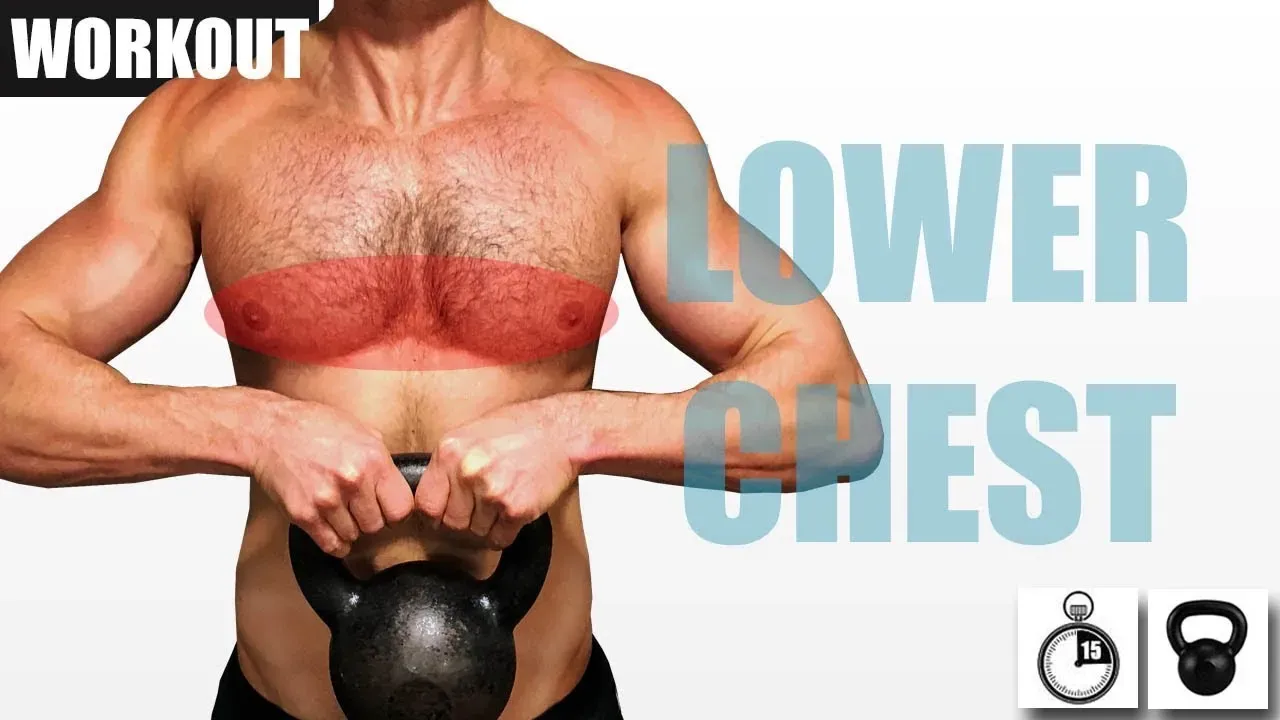Table of Contents
Let's be honest, building a well-defined chest isn't just about the upper pec sweep. That crisp line separating your chest from your abs? That's the lower chest, and it often gets short shrift in workout routines. Maybe you've hammered away at bench presses forever and still feel like something's missing down there. Or perhaps you're tired of the same old dumbbell routine and looking for a different angle, literally. If you're aiming for that complete look, ignoring the lower portion is like building a house and forgetting the foundation.
Why Use Kettlebells for Your Kettlebell Lower Chest Workout?

Why Use Kettlebells for Your Kettlebell Lower Chest Workout?
so why bother with a kettlebell for your lower chest when you could just grab a dumbbell or hit the bench press? Kettlebells offer a different feel, a unique leverage point thanks to the handle and the weight distribution. This offset weight challenges your stabilizing muscles more than a traditional dumbbell press. Think about a floor press with a kettlebell – the weight hangs below your hand, requiring more control through the movement. This instability can actually help activate more muscle fibers, potentially leading to better growth over time, especially when you're trying to hit a specific area like the lower pecs.
- Unique leverage and weight distribution.
- Increased demand on stabilizing muscles.
- Potential for greater muscle fiber activation.
- Offers a different stimulus than barbells or dumbbells.
- Versatile for various exercise angles.
Understanding Your Lower Pecs: Anatomy for Effective Training
Meet the Muscle: The Sternal Head
Alright, let's get a little nerdy for a second, but trust me, it helps. When we talk about the lower chest, we're really focusing on the sternal head of your pectoralis major muscle. Your pec major is a big fan-shaped muscle. The upper part (clavicular head) attaches up near your collarbone, and the much larger lower part (sternal head) attaches down along your sternum, or breastbone. Those lower fibers run upwards and outwards towards your arm bone. Understanding this fiber direction is key. It tells you *why* certain exercises feel like they hit that lower area better than others.
Think of it like pulling ropes. If you want to pull the lower ropes of a fan towards a central point, you're going to pull from a different angle than if you were pulling the upper ropes. The lower chest fibers are most engaged when you're bringing your arm down and across your body, especially from an elevated position towards your midsection or lower. This is why movements like dips or decline presses are classic lower chest builders. You're working against gravity in a way that aligns with those lower fibers.
Angles Matter: Hitting Those Lower Fibers
So, how does this translate to kettlebells? Because kettlebells allow for a slightly different range of motion and angle compared to a fixed bar or even some dumbbell movements, you can position yourself and the weight to really emphasize that downward and inward motion that targets the sternal head. A kettlebell floor press, for example, might feel different than a dumbbell version. The hanging weight changes the leverage and forces your muscles, including the lower pec fibers, to work harder for stabilization and control throughout the movement.
Getting the angle right is crucial. If you're doing a press, think about pressing the kettlebell down and slightly inward towards your opposite hip, rather than just straight up. If you're doing a fly motion, focus on bringing the kettlebell down and across your body. Small adjustments in angle make a big difference in where you feel the work. It's not just about pushing weight; it's about directing the force along the path those lower chest fibers follow when they contract.
- Lower chest = sternal head of the pectoralis major.
- Fibers run upwards and outwards from the sternum.
- Best targeted with movements pulling down and across the body.
- Gravity and exercise angle are key factors.
- Kettlebells offer unique leverage for targeting angles.
Key Kettlebell Exercises for Lower Chest Development

Key Kettlebell Exercises for Lower Chest Development
so you know *why* kettlebells can be useful and *what* part of the chest we're trying to hit. Now, let's talk brass tacks: the actual movements. Building a solid kettlebell lower chest workout means selecting exercises that put the sternal head of your pec major under tension, ideally with that downward and inward pull we discussed. Kettlebells aren't always the first tool people grab for chest day, which is part of the fun – they force you to think a little differently about classic movements and how leverage plays a role. Forget just pushing straight up; we're looking for angles that align with those lower fibers.
Building Your Kettlebell Lower Chest Workout Routine

Building Your Kettlebell Lower Chest Workout Routine
Setting Your Lower Chest Goals
so you're ready to put this knowledge into practice and build your own kettlebell lower chest workout. First things first: what are you trying to achieve? Are you chasing size (hypertrophy) or just trying to add some definition and strength? Knowing your goal dictates how you structure the sets, reps, and overall volume. If it's size, you'll likely aim for moderate reps (think 8-15) and focus on time under tension. For strength, lower reps (3-6) with heavier weight, assuming you have a range of kettlebells, makes more sense. Consistency trumps everything, of course. Hitting your lower chest 1-2 times a week with focused effort is far better than sporadic, high-intensity sessions that leave you unable to move for days.
Structuring Your Kettlebell Lower Chest Session
Once goals are set, pick your battles – or rather, your exercises. You don't need a dozen different movements. Two to three solid kettlebell exercises targeting the lower chest are plenty for one session. Start with the most demanding exercise when you're freshest. A single-arm floor press or a challenging decline variation if you have the setup would fit here. Then move to something like a kettlebell fly variation or a supported press that allows you to really feel the contraction in the lower fibers. Volume is key for growth, so aim for 3-4 sets per exercise. Rest periods depend on your goal: 60-90 seconds for hypertrophy, 2-3 minutes for strength.
Exercise | Sets | Reps (Hypertrophy) | Reps (Strength) |
|---|---|---|---|
Kettlebell Floor Press (Single or Double) | 3-4 | 8-15 | 3-6 |
Kettlebell Decline Press (if setup available) | 3-4 | 8-15 | 3-6 |
Kettlebell Floor Fly | 3-4 | 10-15 | N/A |
Kettlebell Deficit Push-up (hands on bells) | 3-4 | As many reps as possible | N/A |
Integrating and Warming Up
Don't just jump straight into heavy presses. A proper warm-up is non-negotiable. Start with some light cardio to get the blood flowing, then move into dynamic stretches focusing on shoulder mobility and chest activation. Arm circles, band pull-aparts, and light push-ups work well. Your kettlebell lower chest workout shouldn't exist in a vacuum. How does it fit into your overall training split? Are you doing it on an upper body day, a push day, or a full-body day? Make sure you're not overdoing it, especially if you're already hitting chest with other movements. Listen to your body; that slight tweak you ignore can sideline you for weeks.
Progressing Your Kettlebell Lower Chest Workout for Continued Gains

Progressing Your Kettlebell Lower Chest Workout for Continued Gains
Making Those Kettlebells Feel Heavy Again
so you've nailed the basics of your kettlebell lower chest workout. You're feeling the burn in the right spot, and things are starting to feel... easy. That's great! It also means you're not challenging your muscles enough to force them to grow or get stronger anymore. This is where progressive overload comes in – the fancy term for making things harder over time. With kettlebells, simply adding more weight is the most obvious path, assuming you have a rack full of bells. But what if you don't? Or what if the next jump in weight is too big? You get creative. You can increase the number of reps you do for a given exercise, or add sets. If you're doing single-arm work, you can try doing double-arm presses with two bells. Or slow down the movement, really emphasizing the eccentric (lowering) phase to increase time under tension. Holding the kettlebell at the bottom of the press for a second or two before pushing up can feel like a whole new level of torture, in a good way.
Beyond Just Adding Weight
Progression isn't just about lifting heavier iron. You can manipulate other variables in your kettlebell lower chest workout. Shortening rest periods between sets forces your muscles to recover faster and builds endurance. Changing the angle slightly can target the fibers differently, even with the same weight. Maybe you were doing floor presses; try elevating your upper back slightly on a firm pillow or folded mat to increase the range of motion. If you're doing push-ups with hands on bells for extra depth, try elevating your feet. You can also increase the frequency of your lower chest work, hitting it twice a week instead of once, provided you're recovering properly. The key is to consistently find ways to make the movement more challenging than the last time you did it. Sticking with the same weight, sets, and reps forever is a guaranteed way to stop seeing results. Your muscles are lazy; they only change when you give them a compelling reason.
- Ways to progress your kettlebell lower chest workout:
- Increase kettlebell weight.
- Increase reps per set.
- Increase sets per exercise.
- Slow down the tempo (increase time under tension).
- Decrease rest time between sets.
- Use single kettlebell exercises instead of double (requires more stabilization).
- Change exercise variations (e.g., elevated push-ups, decline press if possible).
- Increase workout frequency (cautiously).
Finishing Strong: Your Lower Chest Journey
So there you have it. Building a more defined lower chest with kettlebells isn't some mythical quest. It requires understanding the target muscle, selecting the right exercises, and consistently putting in the work. Kettlebells offer a different stimulus than barbells or dumbbells, providing unique challenges that can help break plateaus and add detail to your physique. Don't expect to wake up tomorrow with superhero pecs, but stick with a smart kettlebell lower chest workout routine, focus on quality reps, and track your progress. The path to a stronger, more sculpted lower chest is clear – now it's time to lift.